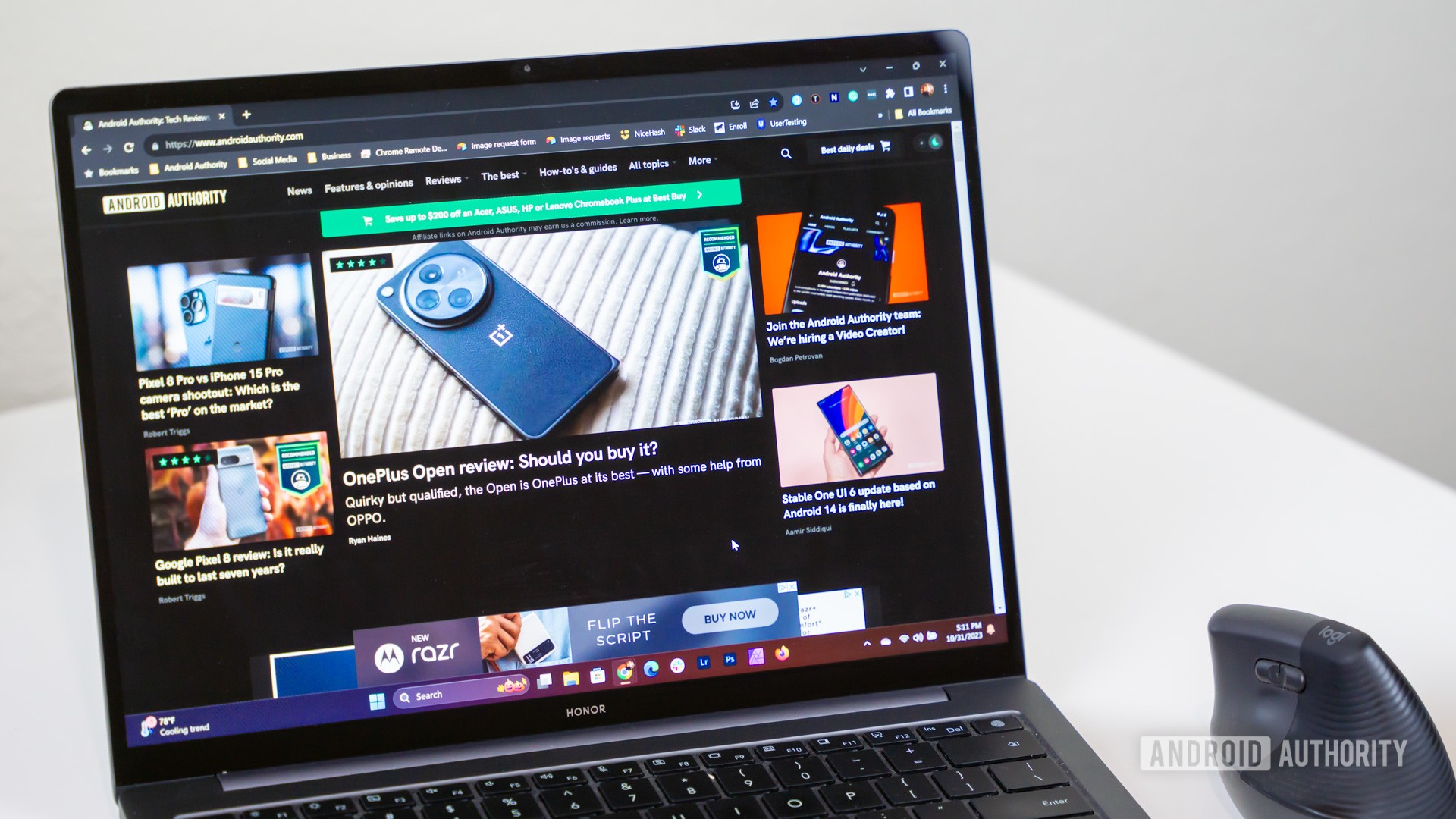Affiliate links on Android Authority may earn us a commission. Learn more.
10 ways to fix Chrome's "out of memory" error code
Published onJanuary 2, 2024
Chrome is a notorious memory hog on desktop computers, especially Macs. So while Google has taken a lot of steps to improve the situation over the years, there are still plenty of opportunities to run into an “out of memory” error with the web browser. Here’s what you can do when that error crops up.
How to fix Chrome’s “out of memory” error code

It’s worth stating upfront that the more RAM you have, the better. Your computer should have at least 16GB to handle a standard number of Chrome tabs without issues. 32GB is even better, but probably overkill in most circumstances. If your PC is stuck with 8GB, you’ll have to keep a tight lid on the number of tabs you open, and you’re probably overdue for a RAM upgrade — if not an entirely new computer. In the interim, here’s how you can cope with “out of memory” errors:
- Refresh the affected tab. If your computer has an ample amount of RAM, the error is often a fluke that can be fixed by refreshing the affected tab, no additional actions necessary. If you were entering data, some or all of it may be preserved. Keep backups of any long writing in an app like Notepad.
- Close any unnecessary tabs and refresh the broken one. Even a single Chrome tab can consume hundreds of megabytes’ worth of RAM, so if you haven’t touched a tab in several hours or several days, go ahead and close it. If you genuinely need to come back to a webpage later, bookmark it or add it to your Reading List. This might be a good opportunity to send material to a Kindle or any other tablet you use for reading.
- Make sure Memory Saver is enabled. This is a relatively recent addition to Chrome that automatically frees up RAM from tabs that haven’t been used in a while. The feature may already be on, but you can doublecheck that by clicking on the triple-dot menu and going to Settings > Performance. Optionally you can specify websites that will always stay active if they’re open, such as Gmail, Spotify, or your employer’s web dashboard.
- Check for updates to Chrome. Google updates its browser very frequently, often multiple times per month. Usually this is just for bugfixes and security, but sometimes it makes optimizations that improve memory usage. You can update desktop versions of Chrome by clicking on the triple-dot menu and going to Settings > About Chrome.
- Clear Chrome’s cache. Chrome keeps a lot of recently-used page data handy to make sites load faster. While this shouldn’t spur “out of memory” errors, which are normally connected to RAM rather than storage space, it’s worth ruling out cache issues before attempting more complicated troubleshooting steps. First, click on the triple-dot menu and go to Settings > Clear browsing data. Be sure only Cached images and files is checked, then click Clear data. Your computer will have to reload all assets the next time it visits any given webpage.
- Remove any unused extensions. Extensions are a central part of the Chrome experience, but some may be more demanding than others, and it’s all too easy to pile up an assortment you’ve stopped using. You can remove extensions by clicking on the triple-dot menu, selecting Extensions, then clicking Remove next to anything irrelevant. Google even highlights any extensions that have been pulled from the Chrome Web Store, which should probably be deleted without question unless they still work and you’re dependent on them.
- Restart Chrome. There could be some temporary glitch with the browser that will be solved by restarting. Don’t get your hopes up, but it’s worth trying.
- Restart your computer. In theory there could be operating system-level cache or process problems getting in the way. Rebooting your computer will give it a fresh start, especially since RAM will be emptied of most non-essential data.
- Disable hardware acceleration. If nothing else has worked so far, try disabling Chrome’s hardware acceleration features by clicking the triple-dot menu, navigating to Settings > System, then toggling off Use hardware acceleration when available. It could be that your video card/GPU can’t keep up with Chrome’s demands. If this change doesn’t make any difference, be sure to flip acceleration back on.
- Increase available virtual memory. All computers set aside a base amount of storage as “virtual” memory in case they run out of RAM. Macs only assign virtual memory automatically, but on a Windows PC, you can control what’s available. Assuming you’re using Windows 11, search for “advanced system settings” using the taskbar, then open the top result. In the System Properties window that pops up, select the Advanced tab, then the Settings button under Performance. Click on the next Advanced tab, then the Change button under Virtual memory. To gain manual control, uncheck Automatically manage paging file size for all drives. You should only ever increase the amount over what’s currently allocated, since you could otherwise create trouble not just with Chrome, but other apps too.